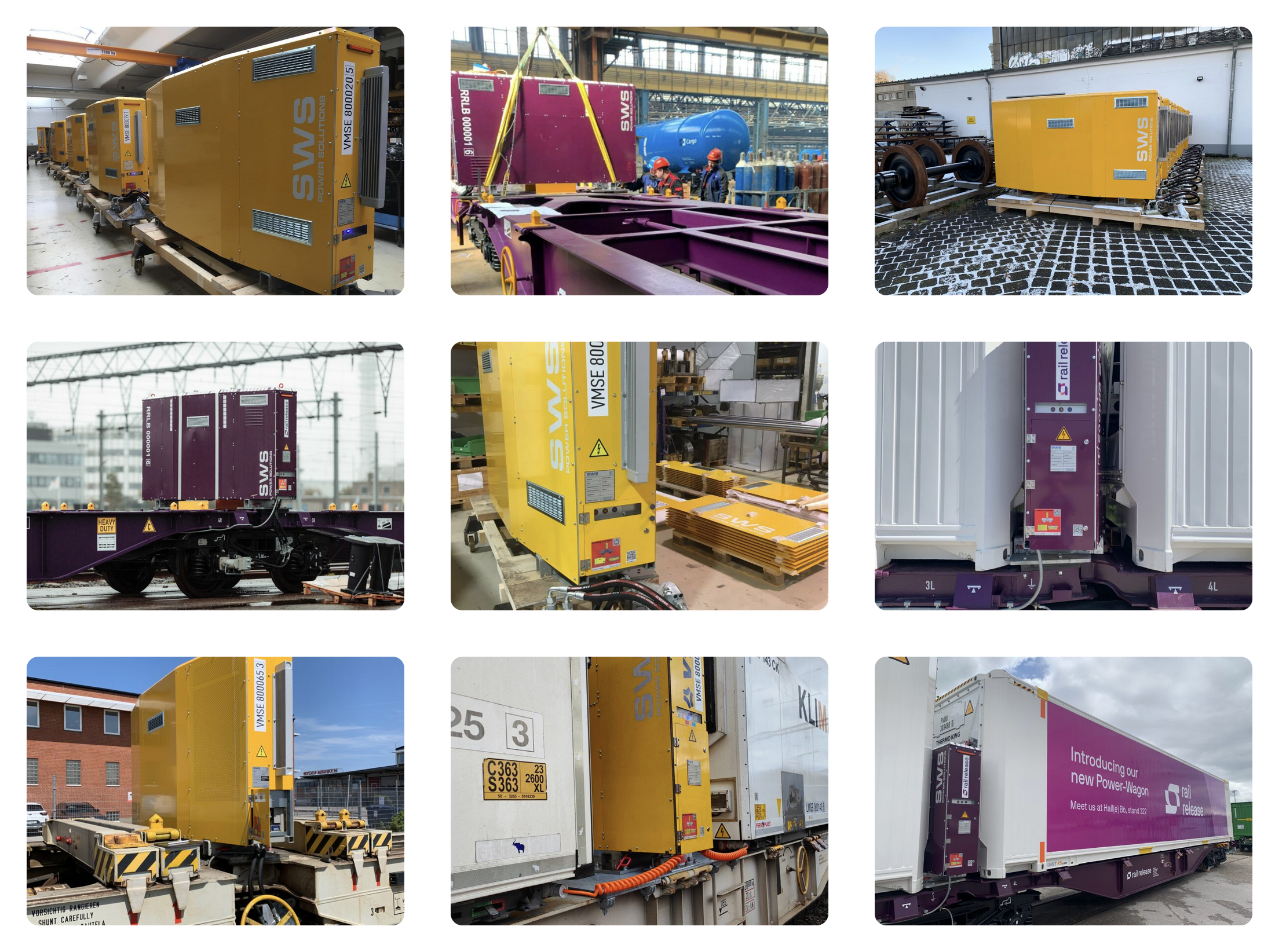Europe's Regulatory Trap is Choking Innovation
We are holding back innovation in Europe - a startup's perspective with thoughts on untangling the red tape.

Europe's Regulatory Dogma
Europe claims to champion climate protection, safety, data privacy, and social responsibility, yet it increasingly resembles a technocratic museum, falling behind the world’s most dynamic regions.
While other parts of the world push new technologies through entrepreneurial drive, capital, and strategic support, Europe gets bogged down in technocratic self-absorption. The result is a bureaucracy that increasingly hinders, rather than drives, innovation.
Other nations rely on free space and pragmatic policy to foster key technologies, while Europe entangles itself in regulatory contradictions. This is especially evident in highly regulated tech sectors like artificial intelligence, where Europe plays virtually no role anymore. In traditional industries such as the railway sector, innovation is quite literally stuck on the sidings.
Even seemingly trivial rules with good intent, such as the requirement for "tethered caps" on beverage bottles, reveal an excessive obsession with detail - a symbol of micro-regulation that blocks macro-progress.
Lasting progress arises only from freedom, personal responsibility, innovation, and a competitive spirit. The greatest danger of political power lies in its impulse to regulate what it does not understand and never bears the consequences for.
Transformation Hits Regulatory Reality
Politically, the goal is clear; Europe is pursuing climate-neutrality, digital sovereignty, and economic competitiveness. The Commission has launched some key innovation initiatives recently:
Climate change and environmental degradation are an existential threat to Europe and the world. To overcome these challenges, the European Green Deal will transform the EU into a modern, resource-efficient and competitive economy, ensuring; no net emissions of greenhouse gases by 2050; economic growth decoupled from resource use; no person and no place left behind

The European Chips Act will bolster Europe’s competitiveness and resilience in semiconductor technologies and applications, and help achieve both the digital and green transition. It will do this by strengthening Europe’s technological leadership in the field.

...to regulate artificial intelligence (AI) to ensure better conditions for the development and use of this innovative technology, for better healthcare, safer and cleaner transport, more efficient manufacturing, and cheaper and more sustainable energy. The AI Act addresses potential risks to citizens’ health, safety, and fundamental rights. It provides developers and deployers with clear requirements and obligations regarding specific uses of AI while reducing administrative and financial burdens for businesses.
In addition, it introduced the "Competitiveness Compass," which names 3 key indicators and ambitions for change:
Closing the Innovation Gap
🚀 Creating a friendly environment for young companies to start and expand, with a dedicated EU start-up and scale-up strategy.
🧠 Helping big companies adopt new technologies such as artificial intelligence (AI) and robotics, thanks to an “Apply AI” initiative.
⚖️ Making it easier for companies to operate across the EU by simplifying rules and laws, with a proposal for a 28th legal regime that will guarantee one set of rules across the EU.
💡 Supporting the development of new technologies, with action plans for quantum, advanced materials, biotech, robotics and space technologies.
Decarbonising our Economy
🟢 Putting forward the Clean Industrial Deal, to help reduce carbon emissions, especially for energy-intensive companies, and facilitate their transition to low-carbon technologies.
🏭 Tailor-made action plans for energy-intensive sectors, such as chemicals, steel and metals, which are the most vulnerable at this phase of the transition.
📉 Developing an affordable energy action plan to help bring down energy prices and costs.
Reducing Dependencies
🤝 Diversify and strengthen our supply chains.
🌐 Clean trade and investment partnerships to help secure the supply of raw materials, clean energy, sustainable transport fuels, and clean tech from across the world.
💰Review public procurement rules to allow for the introduction of a European preference in public procurement for critical sectors and technologies.
It all sounds very proactive and dynamic, but it overlooks a fundamental truth; competitiveness cannot be centrally planned or managed. It cannot arise from targets set in Brussels, but only from the right conditions, freedom, personal responsibility, and market-driven dynamics.
Steering Innovation
The European strategy increasingly resembles centralised steering mechanisms, with programs from Brussels acting like economic five-year plans, detached from the dynamism of entrepreneurial reality. While these programs aim at decarbonisation, energy efficiency, and technological support, they paradoxically hinder exactly those objectives.
Instead of creating space for experimentation, rapid market entry, and entrepreneurial risk-taking, a dense thicket of regulation and approval bodies has emerged.
The political language promises innovation, but the administrative reality produces stagnation. Particularly affected are start-ups and small, research-driven companies seen as key drivers of transformation.
This creates a challenging paradox - those actors who could truly drive change, the founders, small tech firms, and productive SMEs - are hit hardest by this regulation. They lack the legal departments and financial reserves to endure years-long approval and certification processes. Unlike large corporations, which can shape or bypass rules, SMEs and start-ups face ever-growing barriers to market entry.
Recognising the Problem
Even the EU Commission's own "Competitiveness Report" from 2024 confirms this trend - Europe's competitiveness suffers from deep structural weaknesses. One of the most striking findings is the high public spending ratio in many member states, leaving little room for entrepreneurial initiative.
Increasingly, economic policy structures resemble centralised command economies, with shades of Soviet-style planning. While businesses in the USA scale faster and access capital more easily, an ever-expanding public sector in the EU stifles market dynamics. Innovation is not enabled; it is smothered by institutional complexity.
The innovation sector recognises the issue and has coalesced around EU Inc., the campaign for a pan-European company structure; it aims to streamline incorporation, management processes, and fundraising for innovative businesses across Europe.
Raising money for startups is widely acknowledged as incredibly hard at the best of times, but especially when trying to identify investors that are prepared to work across 27+ legal systems and break down national silos.
Then start to consider pan-European talent acquisition, how to make stock options work across multiple countries, build out production facilities, and supply chains...the list goes on. So what's the EU.Inc ask?
▶️ One new pan-European legal entity
▶️ One central EU-level registry
▶️ Standardised investment documents
▶️ Standardised EU-wide stock options
▶️ Local taxes & employment
A startup from California can expand and raise money all across the United States. But our companies still face way too many national barriers that make it hard to work Europe-wide, and way too much regulatory burden.
Ursula von der Leyen, Oct 2024
Rail Innovation Hits the Buffers
Hitting the innovation bottleneck is not limited to digital sectors. It is visible in traditional industries where Europe was once strong, like rail. The development of new railway technologies is not driven by technical feasibility, but by layers of regulation and bureaucracy.
Instead of cross-border solutions, companies face an overwhelming jungle of red tape, standards, procedures, and conflicting approval processes. This affects not only new systems but also the modernisation of existing ones.
Particularly troubling is that proven European approval frameworks for freight wagons, UIC, and passenger coaches, RIC, have been effectively dismantled by the 4th Railway Package and the strengthening of the European Railway Agency, ERA.
Where once there was a clear "go-everywhere" principle for freight and passenger wagons, today we face exactly the opposite, a "go-nowhere" reality. Even refurbishments of passenger coaches that have reliably operated for decades turn into regulatory marathons.
One recent example, reported publicly, illustrates the absurdity of the current
regulatory situation. The approval of a new ÖBB night train was delayed by two years because of a shower curtain. If a simple shower curtain can block certification for that long, how can real innovation possibly emerge under such conditions?
The Inside Track on Rail
How regulatory blockades manifest in practice is demonstrated by the example of the SWS-PowerBox. This product was developed by the company SWS Power Solutions and introduced to the European market as an innovative and environmentally friendly energy system for freight wagons. It enables the operation of reefer containers, trailers, and swap bodies on rail without diesel generators.
The solution fully supports the political goals of the European Green Deal and climate neutrality. It is simple in operation, economically sound, and immediately scalable.

However, under the 4th Railway Package, the SWS-PowerBox, like many other innovations in rail, finds itself in a regulatory spaghetti. The European approval framework has become so convoluted that even minor technical changes are classified as safety-critical interventions.
As an example, a similar system in 2019 received approval in Germany in just 3 days with 31 pages of documentation. Today, the same requires over 3,000 pages, multiple approval tracks, enormous resources, and legal uncertainty due to complexity. The resulting risk profile of investment and business operations changes accordingly, and needs to be managed to work within this increasingly restrictive framework.
The economic damage from such procedures is significant and affects all of Europe. This is not just about wasted time or resources; it is the systematic prevention of meaningful innovation. Competitiveness is distorted, free markets are stalled, and entrepreneurial action is hindered.
The result, a climate-friendly, market-ready product that could shift freight from road to rail, is delayed and blocked by new regulations. Rail loses market share, and traffic returns to the roads, hindering our decarbonisation and health goals. Rather than leading, Europe is busy managing its stagnation.

Spurious Safety Arguments
The rail example illustrates the broader pattern of overregulation justified in all sectors by the same argument - safety. Of course, safety is paramount in all forms of transport, and European Railways continue to be some of the safest in the world:
The 2024 Railway Safety and Interoperability Report highlights that European railways remain among the safest in the world. Notably, no major accidents resulting in five or more fatalities occurred in 2018, 2020, and 2021. Unfortunately, there were five tragic events in 2022 and 2023, including the accident that occurred in February 2023 at Tempi, Greece, which claimed 57 lives.
The same report preamble goes on to self-identify the key challenge:
However, there are still many areas to improve, especially considering that railways have not increased their modal share in the transport mix in the past decade, despite being the most sustainable mode of transport.
Political Self-Deception
Regulatory obsession has failed in many areas. One telling example is the Wirecard scandal, where regulation and oversight collapsed entirely. Yet instead of learning from it, politicians and agencies responded with calls for even more regulation, without addressing the root causes.
The result is a false sense of security while regulation continues to stifle innovation. In rail freight, excessive safety rules have reduced the sector to one dependent on high subsidies. That is not a win for safety; it is an economic policy failure.
The consequence is a dangerous shift - freight travels where there is less friction. Moving back to the roads, for more flexibility, investment security, and technical adaptability. This is not only counterproductive for climate goals, but it is also economically inefficient, burdens infrastructure, and increases risk across the system.
Europe’s self-imposed targets for decarbonisation, intermodal logistics, and modal shift are systematically missed. At the same time, policymakers ignore that the logistics industry has long shifted decisively toward road transport.
Despite driver shortages, traffic, and environmental costs, road freight remains faster, simpler, and cheaper.
The disconnect between political intentions and regulatory impact is now threatening Europe’s long-term viability in key sectors and the Competitive Compass areas it looks to excel in.
Europe Needs a Regulatory Reset
To restore Europe's innovative strength in sustainable technologies, we need bold structural reform across all sectors:
▶ Accountability above Overregulation - B2B entrepreneurs must be allowed to act responsibly. The responsible entrepreneur needs freedom to decide, act, and deliver.
▶ Simple, Harmonised Rules - Less is more. Technical standards must be harmonised across Europe, clearly formulated, and digitally accessible.
▶ Streamline Approvals - Approval procedures must be transparent, economically viable, and practical.
▶ Regulatory Sandboxes - We need innovation-friendly test corridors for hardware innovation, where new systems can be tested and scaled quickly, safely, and with minimal red tape.
▶ Economic Feasibility as a Core Metric - Every regulation must be checked not only for safety and interoperability, but also for economic viability. Otherwise, it risks being useless or harmful.
Europe’s Future Is Being Decided Now
Europe has knowledge, talent, and capital, but it lacks trust in entrepreneurial solutions. Instead of enabling new technologies, it has an inherent capability to obstruct itself. The challenges of bringing the SWS-PowerBox through regulatory approval and successfully to market are not isolated; it is one of many systemic warning signs.
To stay competitive, Europe needs a cultural shift. Innovation thrives on freedom, not red tape. Those who can deliver progress, decarbonisation and security of supply must not be hindered. These people are ready to take responsibility; that is what real safety looks like.
Bold progress can only happen through freedom to take responsibility, innovate and be challenged through market competitiveness - this fosters courageous technological leadership. Centralised control systems are of the past; dynamic, agile and lean systems that are innovation-friendly will clear the path for pioneers.
If Europe stays on its current path, it risks becoming a global technology periphery - a continental open-air museum with technological progress frozen in time for viewing by museum visitors. We know the pace and scale of innovation in Asia that we need to match.
This is not the legacy and fate we should leave for future generations. We carry the responsibility to set the course today for a sustainable, competitive, and innovative Europe. A future that creates opportunity, secures prosperity, and leaves our children and grandchildren a liveable, thriving world.
About the Author
Patrick Sluga
Founder and CEO of SWS Power Solutions, based in Austria, Patrick brings 20 years of experience in finance and structured investments across various logistics sectors to address today’s challenges.
SWS is delivering innovative battery technology solutions to decarbonise rail freight and cold-chain logistics across Europe and future global markets.
You can follow Patrick on LinkedIn:
Patrick Sluga - Decarbonising Rail Freight
You can read more about SWS-Power Systems here:
SWS Power Solutions









